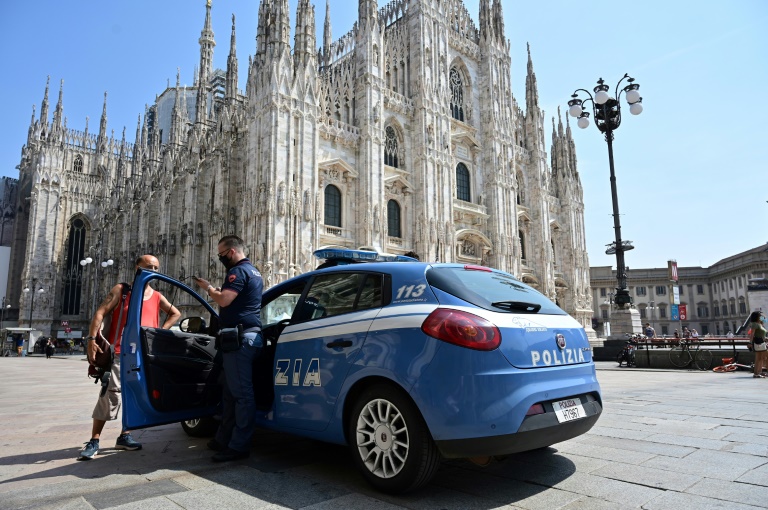
After cracking down on the mafia and driving it to less violent financial crimes, the murder rate plummeted.
Miguel Medina
font size
Italy may have started Cosa Nostra, but today it is one of the safest countries in Europe, with a murder rate well below its neighbours.
From the mid-19th century to the 1990s, mafia violence killed thousands of people, from rivals and traitors thrown into cement or fed to pigs, to judges, priests, and witnesses murdered for daring to defy the mob. Thousands of people lost their lives.
From the late 1960s to the 1980s, Italy experienced the traumatic Years of Lead, when far-left and far-right armed groups terrorized Italy with bombings and assassinations.
The brutal murder of former Prime Minister Aldo Moro by the Marxist-Leninist Red Brigades in 1978 remains seared in the nation’s minds, but the largest number of the estimated 400 victims at the time were killed by neo-fascists.
But after this bloody era ended and a crackdown that pushed the mafia into less violent financial crimes, the murder rate plummeted.
In 1990, Italy had 34 murders per million people, compared to 24 in neighboring France, according to United Nations statistics.
In 2021-22, this fell to 5.5 per million people in Italy, 11 in France, eight in Germany and 10 in the UK.
In Europe, only Norway and Switzerland have murder rates equal to or lower than Italy, with Latvia having the worst case rate, with a murder rate 6.5 times higher.
Raffaella Sette, a sociologist at the University of Bologna, said: “Over the past 25 years, there has been a decline in homicides in general, and especially among men.” Men used to be the main victims of the mafia.
Currently, organized crime accounts for only 10 percent of murders each year.
“Mafias like the Camorra, the ‘Ndrangheta and the Cosa Nostra have fundamentally changed the way they operate,” said Gianluca Arrighi, a criminal lawyer who writes police novels.
“Today they are operating from a more economic perspective, buying up real estate and going into businesses,” he said.
Analyzing the causes of violence across different countries is always risky, but Arrighi believes several factors are at play.
Italy is poorer than its EU neighbors, but this does not necessarily have a negative impact on social welfare, he said, adding that “goodwill” among people can compensate for the hardships in life.
“The more conflicts in a society intensify, the more murders there will be by people who are in some kind of angry state,” Arrighi told AFP.
However, murder rates are higher in the south, Italy’s poorest region.
But Stefano Delfini, head of crime analysis at the government’s Public Security Bureau, agrees that “our society is less violent.”
“Social structures are becoming more resistant, perhaps because of the presence of family values, which means that hardships feel less severe.”
Another factor that causes violence in other countries is alcohol or drug use, especially in France and the United Kingdom.
Italy does not keep data on this, but alcohol consumption is the lowest in the EU, according to the World Health Organization.
There is a growing awareness of femicide (the killing of women and girls by their partners, spouses or family members) in Italy, with 97 of a total of 330 murders recorded in 2023.
The lack of harmonized data on pesticides makes comparisons with other European countries difficult.
However, according to 2021 statistics compiled by the World Bank, Italy’s number of femicide murders per million people is 3.9, far lower than France’s 6.8 and Germany’s 8.0.
